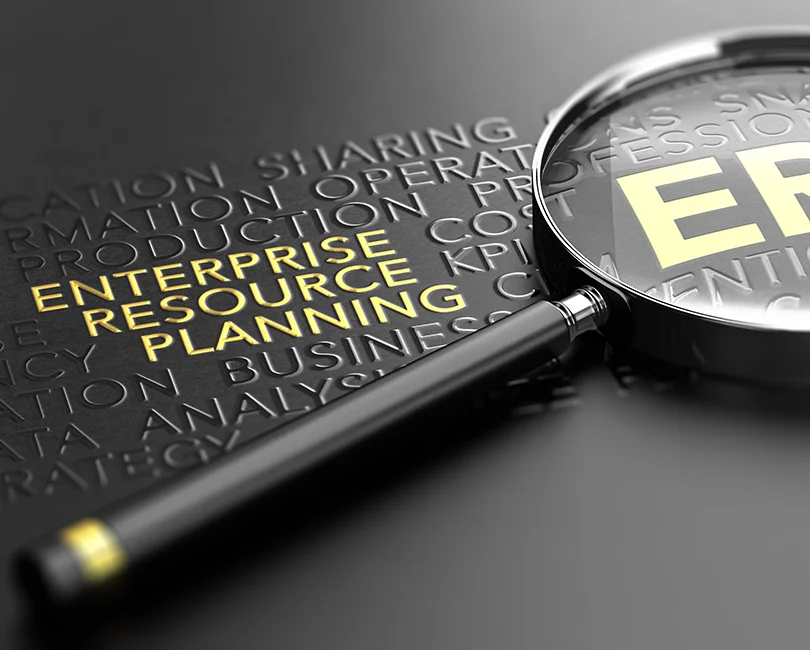Project Success, Delivered: How Project-Based ERP Empowers AE Firms

Managing day-to-day operations can be a complex puzzle in project-based businesses like architectural and engineering firms (AE). With various systems in place for business development/CRM, financial management, invoicing, project management, HR, and time and expense management, the challenge lies in synchronizing these disparate systems.
However, relying on multiple platforms can lead to manual processes, fragmented data across spreadsheets and documents, and dependence on generic financial management tools such as QuickBooks. This results in inaccurate data and contributes to employee burnout and a lack of visibility into project and firm performance. Consequently, industry leaders increasingly turn to Enterprise Resource Planning (ERP) solutions to address these pain points and support firm growth.
Choosing the right ERP solution is crucial as it represents a significant investment for any company. Given the unique requirements of AE firms, the search should focus on project-based ERP systems tailored to meet the specific needs of project-based organizations.
Key features of a project-based ERP system include:
Project Accounting: Comprehensive project accounting capabilities for tracking costs, revenue, and profitability.
Resource Management: Tools to efficiently manage and allocate resources such as personnel, survey teams, and equipment.
Project Planning and Tracking: Functionality to create project plans, define milestones, assign tasks, and track progress against schedules.
Time and Expense Management: Features for tracking employee time and expenses related to specific projects and tasks.
Document Management: Capability to securely store, manage, and share project-related documents and files.
Billing and Invoicing: Flexible billing and invoicing options to accommodate various billing methods.
Reporting and Analytics: Robust reporting and analytics capabilities to monitor project performance and analyze financials.
Integration with Other Systems: Seamless integration with other business systems and applications to ensure data consistency.
Compliance and Governance: Support for regulatory compliance and governance requirements specific to project-based industries.
Mobile Accessibility: Mobile applications enable users to access project information and collaborate from anywhere.
Now that we’ve identified the features of a project-based ERP let’s explore how these features address critical industry pain points: talent retention and development, project profitability, and leveraging technology to enhance staff productivity.
Talent Retention and Development:
Retaining skilled professionals, including architects, engineers, and project managers, poses a significant challenge for AE firms. Based on findings from SN’s 2024 AEC Firm Outlook report, which surveyed firms across the country, 77% of survey participants identified recruiting new staff as a top challenge, while 37% cited retaining existing staff as a key concern.
As experienced personnel retire, the talent gap widens, leading to increased competition for talent and difficulty attracting and retaining skilled individuals. Moreover, the loss of institutional knowledge when employees exit the firm can impact project schedules, client relationships, and reputation.
Implementing an industry-leading project-based ERP solution can enhance employee efficiency by providing comprehensive project and client management capabilities in a single platform. The firm receives a competitive edge during recruitment and improves staff retention by empowering employees with the tools they need to perform their jobs efficiently and productively.
Project Profitability
Project budget overruns can negatively impact project profitability and strain client relationships, potentially damaging the firm’s reputation. In fact, Improving Project Financial Performance ranks among the Top 10 actions firms are taking to proactively prepare for a potential downturn, according to SN’s 2024 AEC Firm Outlook report.
Unlike traditional ERPs, project-based ERP systems provide real-time cost information tied to specific projects, enabling timely insights into project profitability. Project-based ERPs can also help mitigate risks related to schedule and budget overruns by using system-generated alerts. These alerts provide visibility to potential overruns earlier in the project life cycle, thereby allowing firms to take corrective actions to prevent overruns. Integrated project and financial management allow PMs to monitor key performance metrics to ensure projects stay on budget and meet profitability targets.
Leveraging Technology to Improve Staff Productivity
Project-based ERP systems streamline firm operations by eliminating data silos, automating manual processes, and enhancing the quality of information and decision-making. By leveraging workflows, these systems reduce the effort related to timesheets, expense reports, accounts payable, and billing processes.
Data validations ensure accurate information, which leads to faster, more informed decisions. Process automation and accurate information also allow employees to spend less time on low-value activities and more time on productive, high-value activities like nurturing client relationships. In conclusion, a robust project-based ERP system can significantly benefit AE firms of all sizes, addressing challenges and fostering growth in a highly competitive market.
Next Steps
Ready to take the next step? At Stambaugh Ness, we specialize in helping AE firms thrive with tailored ERP solutions. Contact me at [email protected] to learn more about how a project-based ERP can transform your firm’s efficiency and competitiveness.



